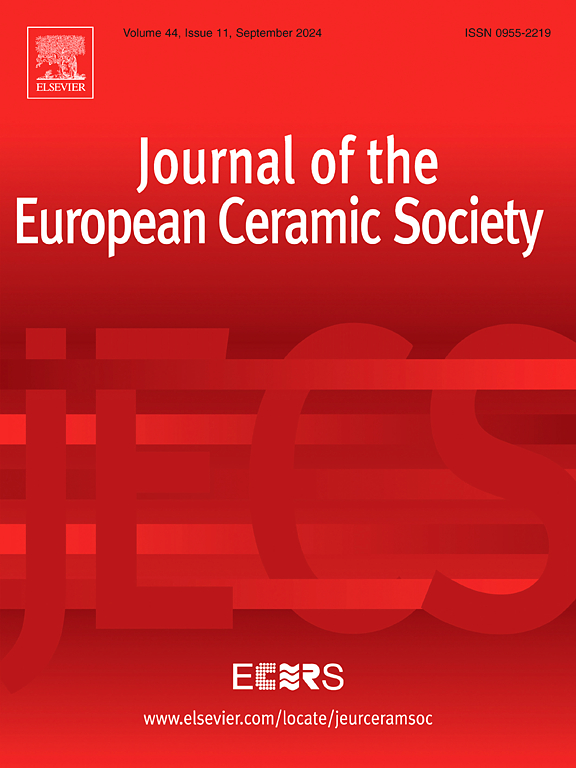了解ABO3铁电体中稀土掺杂对电容储能的影响
IF 6.2
2区 材料科学
Q1 MATERIALS SCIENCE, CERAMICS
Journal of The European Ceramic Society
Pub Date : 2025-05-15
DOI:10.1016/j.jeurceramsoc.2025.117539
引用次数: 0
摘要
即使是微量的稀土掺杂,也能通过协同调节铁电材料的晶体结构和能带等微观行为,显著调节铁电材料的储能性能。然而,了解不同稀土元素影响能量存储性能(如极化和击穿)的机制仍然是一个主要挑战。为了解决这个问题,我们利用密度泛函理论系统地研究了稀土掺杂对三种ABO3钙钛矿铁电体微观铁电行为的影响,方法是用15种稀土离子取代a位或b位离子。结果表明:引入稀土离子后,由于较强的体积效应和杂化作用,可以重构晶格结构和电子态分布,从而改变离子位移极化、反转能垒和能隙;值得注意的是,它们的作用高度依赖于稀土离子在a位或b位的占据。对于a位掺杂,稀土离子的离子半径减小通常会导致c/a比、极化强度、反转能垒和能隙的增加,而b位掺杂则呈现相反的趋势。本研究揭示了稀土掺杂影响储能性能的潜在机制,为钙钛矿铁电体中稀土掺杂的工程化提供了重要的理论指导。本文章由计算机程序翻译,如有差异,请以英文原文为准。
Understanding the effect of rare-earth doping in ABO3 ferroelectrics on capacitive energy storage
Rare-earth doping, even in trace amounts, can significantly regulate the energy storage performance of ferroelectric materials by synergistically adjusting microscopic behaviors such as crystal structure and energy bands. However, understanding the mechanisms by which different rare-earth elements influence the energy storage performance such as polarization and breakdown remains a major challenge. To address this, we use density functional theory to systematically investigate the effect of rare-earth doping on the microscopic ferroelectric behavior in three ABO3 perovskite ferroelectrics by substituting A-site or B-site ions with 15 types of rare-earth ions. The results show that when introducing rare-earth ions, lattice structure and electronic state distribution can be rebuilt due to strong volume effect and hybridization, thereby altering the ion displacement polarization, reversal energy barrier, and energy gap. Notably, their effects highly depend on the occupancy of rare-earth ions on the A-site or B-site. For A-site doping, a decrease in the ionic radius of rare-earth ions generally leads to increases in the c/a ratio, polarization strength, reversal energy barrier, and energy gap, whereas B-site doping shows the opposite trends. This work reveals the underlying mechanisms of rare-earth doping on affecting the energy storage performance and provides important theoretical guidance for engineering rare-earth doping in perovskite ferroelectrics.
求助全文
通过发布文献求助,成功后即可免费获取论文全文。
去求助
来源期刊

Journal of The European Ceramic Society
工程技术-材料科学:硅酸盐
CiteScore
10.70
自引率
12.30%
发文量
863
审稿时长
35 days
期刊介绍:
The Journal of the European Ceramic Society publishes the results of original research and reviews relating to ceramic materials. Papers of either an experimental or theoretical character will be welcomed on a fully international basis. The emphasis is on novel generic science concerning the relationships between processing, microstructure and properties of polycrystalline ceramics consolidated at high temperature. Papers may relate to any of the conventional categories of ceramic: structural, functional, traditional or composite. The central objective is to sustain a high standard of research quality by means of appropriate reviewing procedures.
 求助内容:
求助内容: 应助结果提醒方式:
应助结果提醒方式:


